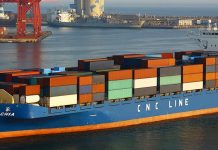
Carrier adjustments due to Red Sea diversions – the use of more vessels travelling at faster speeds, together with heavier reliance on transshipment – for the most part succeeded in keeping containers moving on schedule through March and April.
But alongside the success were gradual signs that carriers were falling behind: pockets of congestion, increases in port omissions, delays and missed departures, and a decrease in empty equipment at export hubs.
With demand stable, in those months carriers had just enough capacity and equipment to keep the market balanced and rates elevated but level. But as ex-Asia demand unexpectedly picked up in May – reflecting the likely start of restocking in Europe and the early start of peak season on the transpacific due to concerns over Red Sea or labour-driven delays later in the year – congestion has worsened and these supply-side deficits began to be felt in the form of empty equipment shortages in Asia, rolled containers and spiking rates.
Asia – N. America spot rates to the West Coast are approaching US$5,000/FEU – about their peak when prices initially spiked due to the Red Sea crisis early in the year – and have increased nearly 70% from their April floor.
Rates to the East Coast and N. Europe have each increased about 50% in May, though they remain below their February highs, with intra-Asia rates climbing and surcharges pushing up prices on secondary lanes as capacity and equipment tighten. If these market conditions persist, rates are likely to climb past their Q1 highs on additional June GRIs and surcharges.
Shippers could be facing months of very elevated rates and increased delays as higher demand combines with restricted capacity, but the duration and scale of these disruptions and price spikes could be less severe than those unprecedented impacts seen during the pandemic for a couple of reasons.
The main driver of pandemic disruptions was the unrelenting, record surge in demand. This demand quickly outstripped vessel supply and then overwhelmed ports leading to record congestion that only made the problem worse and worse, further restricting capacity, increasing delays and pushing rates ever higher.
This time, volumes are increasing but not surging, and there’s no reason to expect that they will. According to the National Retail Federation, during an 18-month stretch in 2021 and 2022 US import volumes averaged 2.21 million TEU per month and surpassed 2.3 million TEU twice. May through September volumes this year, meanwhile, are projected to average 2.05 million TEU per month and peak at 2.1 million in September.
These are volume levels US ports should be able to handle, not only because they are lower than during the pandemic but because strategies developed during the pandemic to avoid congestion from volume surges, like off-port container yards, are already in place. So increases in demand, delays, congestion and empty container shortages should push rates up, but shouldn’t be a challenge that keeps compounding upon itself like during the pandemic.
In addition, if the demand increase is the early start of peak season, then we can expect demand-side pressure to subside in a few months and earlier than usual. Just as rates climbed on a combination of pre-Lunar New Year demand and restricted capacity in the first months of the diversions and subsided once demand eased, prices and disruptions should decrease when peak season slows this time as well, though, until Red Sea traffic resumes, we can expect rates to fall no lower than their April floor.
Disruptions and higher prices in ocean logistics could push more volumes to air cargo as they have been on some lanes since the beginning of the Red Sea crisis. So far in May, however, Freightos Air Index rates from China and South Asia to N. America and Europe have remained stable.
For much of the year, ocean disruptions have led to increased sea-air demand out of places like Singapore and Dubai for shippers looking for service faster than the ocean but less expensive than air cargo. Middle East air cargo export rates rebounded 12-25% last week back to early May levels, suggesting some increase in demand already. But port congestion and spiking ocean rates to these hubs – Freightos Data spot rates from Shanghai to Jebel Ali spiked by more than 50% in the last three weeks to more than US$4,200/FEU – may start to make these options less attractive.
Ocean rates – Freightos Baltic Index:
- Asia-US West Coast prices (FBX01 Weekly) increased 13% to US$4,917/FEU.
- Asia-US East Coast prices (FBX03 Weekly) climbed 18% to US$6,323/FEU.
- Asia-N. Europe prices (FBX11 Weekly) climbed 6% to US$4,876/FEU.
- Asia-Mediterranean prices (FBX13 Weekly) increased 3% to US$5,637/FEU.
Air rates – Freightos Air index:
- China – N. America weekly prices decreased 3% to US$5.69/kg
- China – N. Europe weekly prices stayed level at US$4.02/kg.
- N. Europe – N. America weekly prices fell 1% to US$1.73/kg.
This article was written by Judah Levine, Head of Research at Freightos





